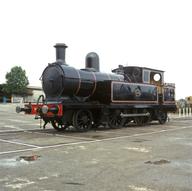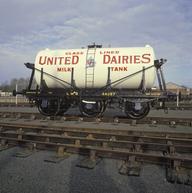

Reconstruction of Novelty Locomotive
- Made:
- 1829 in London and Manchester
- maker:
- Braithwaite and Ericsson and
- Science Museum
Reconstruction of Novelty Locomotive, 1829. Incorporates original wheels (1914-83) and cylinder (1904-16).
Novelty was originally developed in 1829 by John Braithwaite and John Ericsson for the Rainhill Trials, a competition organised to find the best engine design for the new Liverpool and Manchester Railway. Novelty was fast, but it was lightly built and broke down, leaving Stephenson’s Rocket to win the Rainhill Trails.
Immediately following the Rainhill Trials, John Ericsson used Novelty in experiments and design improvements through 1829. Novelty was then briefly used on the new St Helens and Runcorn Gap Railway. Novelty was then rebuilt in 1833 by Robert Dalglish, with a new boiler, new wheels, and new cylinders. It was at this point that the original cylinders were removed and sent to John Melling who was the Locomotive Foreman of the Liverpool and Manchester Railway. He left in 1839/40 to start Rainhill Iron Works. He had previously purchased a bottling plant in Rainhill, which he used as an engineering works, this became the Rainhill Gas and Water Company.
One of the cylinders was used to drive industrial machinery (a winch and a lathe) before being presented to the Science Museum in 1905 by the Rainhill Gas and Water Company. The surviving cylinder was incorporated into this replica of the Novelty, built by the Science Museum in 1929.
Details
- Category:
- Locomotives and Rolling Stock
- Object Number:
- 1929-866
- Materials:
- metal (unknown)
- Measurements:
-
overall: 3060 mm x 1800 mm x 4030 mm,
- type:
- steam locomotive
- credit:
- Science Museum, Workshops




